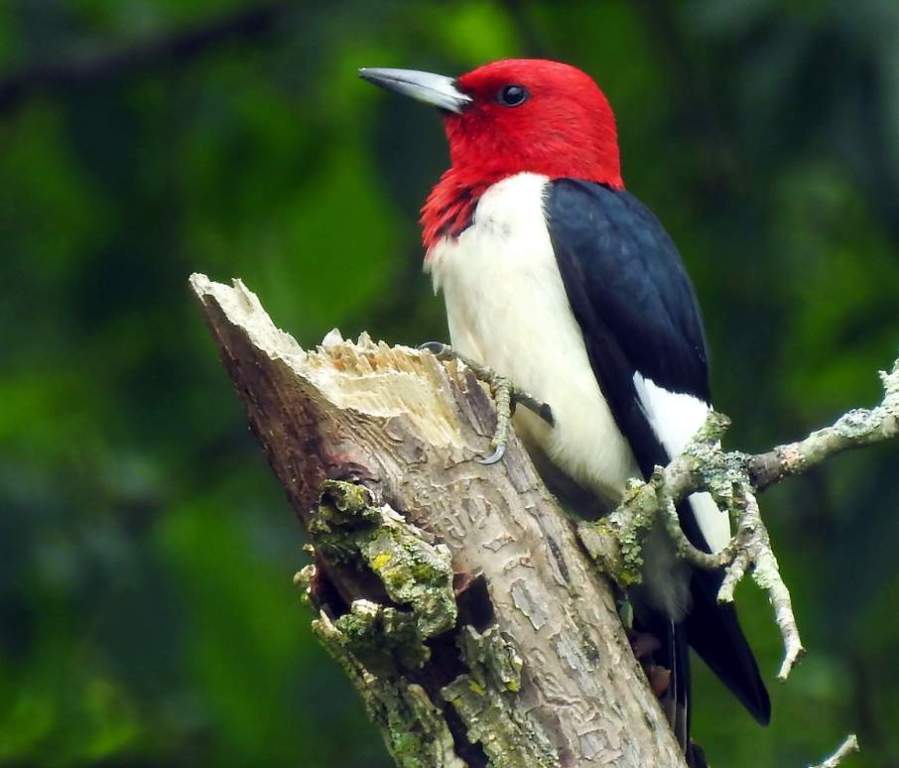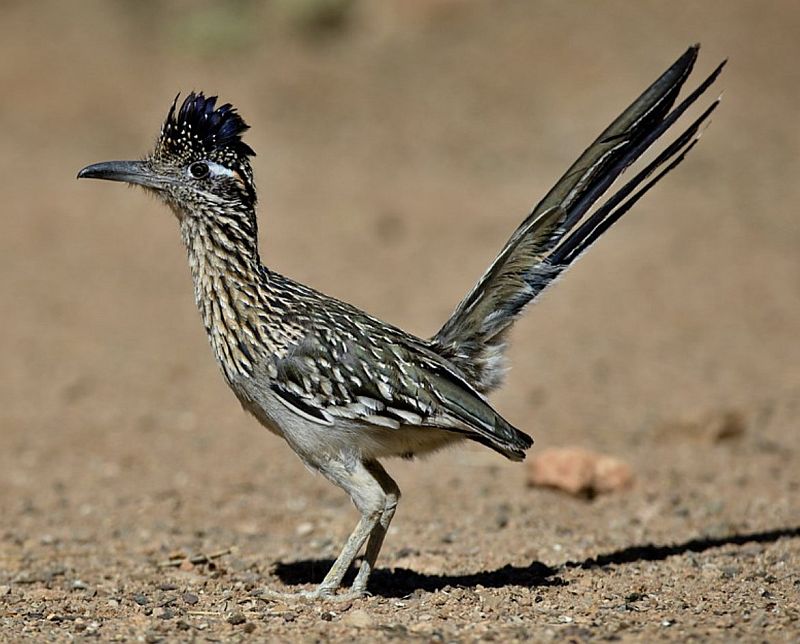Habitat: The red-headed woodpecker (Melanerpes erythrocephalus) is a common transient and summer resident statewide. It is a local and irregular winter resident in the eastern part of the state. This magnificent woodpecker is often the only bird seen in the prairie, far from trees. It tends to nest in trees with softer wood than oak but prefers oaks and pecan groves as its favorite winter haunts.
Like its close kin, the Acorn Woodpecker, it stores acorns and pecans for winter food. Whether or not it remains for the winter depends on the local food supply. Like all woodpeckers, it possesses strong claws with which it clings to the bark as it excavates for insects. The tail is very stiff and is used as a prop.
Period of Occurrence: The Redheaded Woodpecker is recorded every month of the year. However, it is most common from April 25 to September 26. In winter, it is an irregular visitor and, in most cases, uncommon to rare.
Breeding: This woodpecker nests in all counties. It nests in tree cavities, which it excavates, or it may utilize a nest from a previous year, which another species excavated. The cavities are usually dug out of dead limbs and are 9 to 14 inches deep.
Eggs: The eggs are laid on chips taken from the cavity’s inner walls. If trees are not available in the western part of the state, they may use utility poles or man-made cavities. However, it found one using a Blue Jay nest in Iowa in 1939. The eggs are white, and the usual clutch size is three to four eggs. The incubation period is approximately 12 days, and the young fledge in about 18 days.
Call: A red-headed woodpecker can be quite vocal, and experienced birdwatchers can easily distinguish their different call notes. They are particularly noisy in the spring during mating, and in winter they tend to be quieter. This woodpecker’s habit of digging into utility poles has not endeared it to utility companies.
Field Marks: The completely red head, contrasted with the blue-black and white of the rest of the body and wings, is spectacular and immediately draws attention. This color combination is found in no other species in Kansas. The red-bellied woodpecker is sometimes confused with the red-headed woodpecker, but in the latter species, the red covers the top of the head, the nape of the neck, and the throat. The red-bellied woodpecker has no red throat.
Food: The red-headed woodpecker consumes a variety of food, including fruit, and may damage crops. They also eat acorns, pecans, corn, and other seeds. They eat eggs, nesting birds of other species, and insects, some of which have been found alive wedged in cracks, presumably stored for a future banquet. They are apparently omnivorous and consume anything they can swallow.







